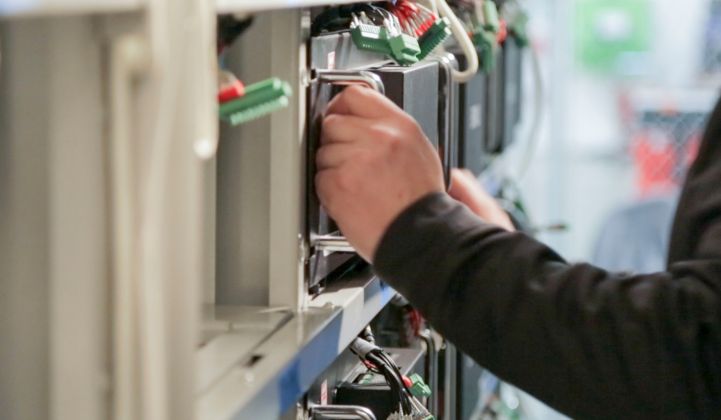Powin Energy, the Oregon-based energy storage developer, is expecting to see an uptick in non-recourse financing following a landmark project this month.
The company secured construction financing for an 8.8-megawatt/40.8-megawatt-hour battery plant in Stratford, Ontario, from Brookfield Renewable Partners, one of the largest independent renewable energy businesses in the world.
"Securing non-recourse financing is a critical step for energy storage assets themselves, as well as the broader market," said Geoffrey Brown, Powin Energy president, in a press release. “We believe that closing a deal of this nature with a well-respected group like Brookfield is indicative of market maturation and Powin's future prospects."
While the non-recourse funding model is commonplace in most renewable energy markets, the track record is more limited in energy storage. Only a handful of deals have made headlines.
Last year, for example, another Ontario project based on flywheels and lithium-ion batteries and built by Convergent Energy and Power was funded through a non-recourse finance package from CJF Capital and SUSI Partners’ Energy Storage Fund I.
“The facility reflects a non-recourse, third-party project financing structure for energy storage assets in a sector dominated by on-balance-sheet financing,” noted Convergent in a press statement.
Previously, non-recourse finance had helped fund Australia’s first utility-scale integrated solar and battery project, built by Conergy with backing from Norddeutsche Landesbank Girozentrale.
And in 2015, half the money for the Jake and Elwood battery storage projects developed by Renewable Energy Systems Americas came from non-recourse senior secured project financing debt.
Brown said he thought many energy storage projects since had been difficult to fund through non-recourse debt because of the nature of their contracts.
Following the Stratford deal, though, Brown told GTM he expected non-recourse funding to become the norm for energy storage projects with clear, fixed revenue streams.
“If you’re talking about contracted or not just purely ancillary services revenue, then the percentage of projects that are going to have some level of non-recourse debt financing is substantial,” he said. “Energy storage is the type of thing that, if you’re talking non-recourse debt financing, naturally is attractive to capital.”
Investor understanding of the technical side of battery storage has increased in recent years, said Brown. “Now it’s just about driving up the volume of projects. We don’t expect storage to be different to any other renewable energy.”
Non-recourse finance, loans where the lender is only entitled to repayment from the benefits of a project and not from the other assets of the borrower, has been growing in importance in other green energy sectors.
The model is particularly suited to capital-intensive projects that deliver regular income over long periods, as is typically the case with wind or solar plants.
In 2014, it accounted for 32 percent of the money going to all new renewable energy assets, according to Bloomberg New Energy Finance’s 2015 Global Trends in Renewable Energy Investment report.
The financing model has been particularly helpful in the development of offshore wind.
The European Wind Energy Association’s offshore statistics report showed that €5 billion (USD $5.8 billion) of funding, equivalent to 1.3 gigawatts or 44 percent of new gross capacity, was on a non-recourse basis in 2015.
A 2014 report by the law firm Orrick and Clean Energy Pipeline, an online data service, identified two roadblocks to the growth of non-recourse financing in energy storage.
The first is that projects must have “an enforceable revenue contract with a creditworthy offtaker (typically a utility) under which the offtaker is subject to a clear obligation to take or pay for the storage product being provided.”
Second, said the report, long-term equipment warranties backed by creditworthy entities would be needed, at least until the technology had a decent track record.
Given those conditions, said the authors: “Our experience has been that the general types of issues arising in a non-recourse project financing of a storage project are no different than those arising when financing a typical generation project.”
--
Join GTM for a deep dive into the budding domestic energy storage market at the U.S. Energy Storage Summit 2017. Utilities, financiers, regulators, technology innovators, and storage practitioners will all come together for two full days of data-intensive presentations, analyst-led panel sessions with industry leaders, and extensive, high-level networking.




